Page Table of Contents
About the Author
Hot Topics
Updated on Dec 23, 2025
Resizing a partition on your Windows 10 system is a common task to optimize storage space or accommodate new software. However, the expected seamless reboot can turn into a frustrating ordeal when your computer refuses to boot afterward. This issue is very common among the users. But worry not. In the upcoming sections, EaseUS will unravel the complexities of this issue and provide you with a clear, effective solution.
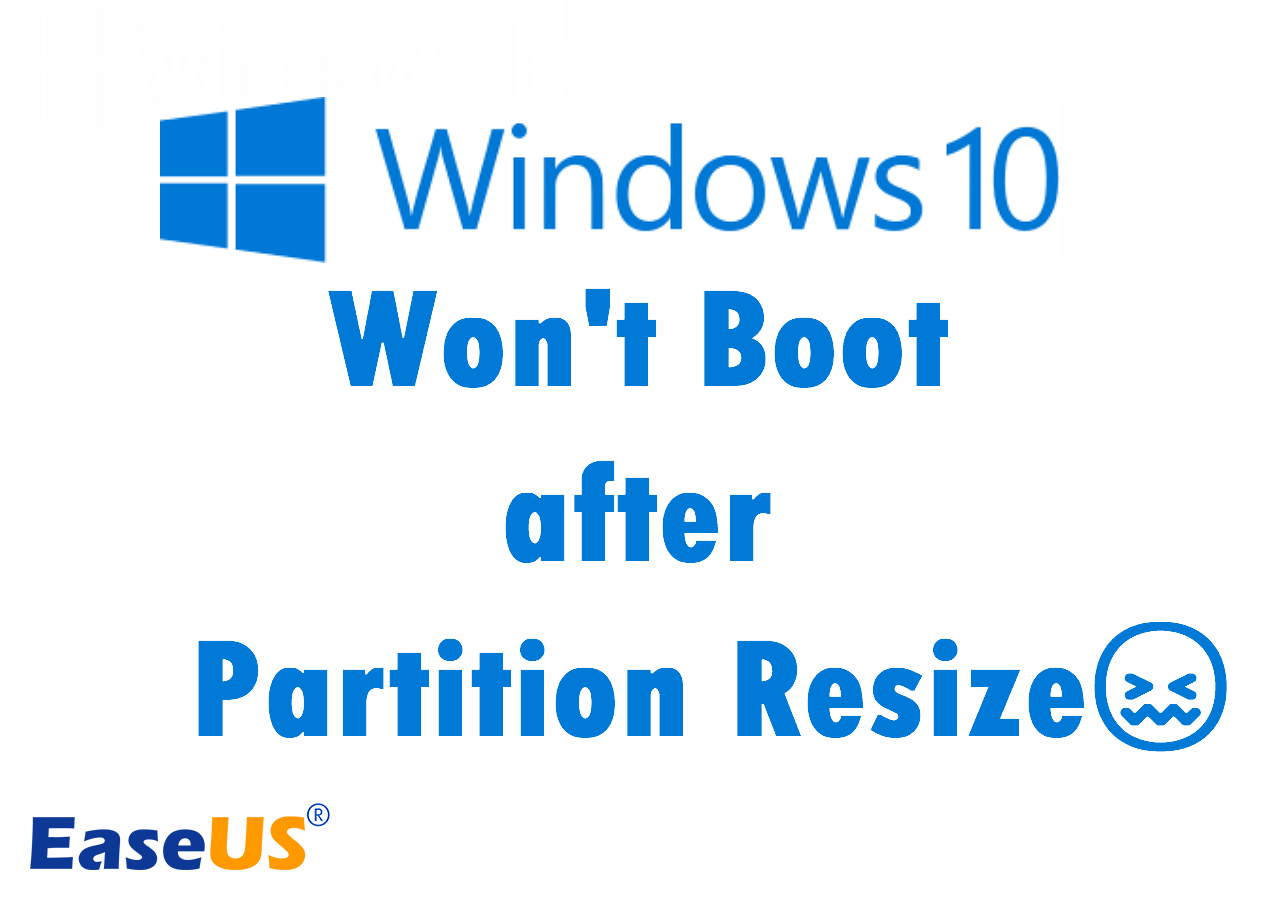
Countless users like you have faced the frustration of "Windows 10 won't boot after partition resize." You can check the example below to see if you are experiencing the exact same issue.
3 Methods: Fix Windows 10 Won't Boot after Partition Resize
You might feel troubled if your Windows 10 PC is unable to boot up following a partition resize. However, you can rest assured that we are here to help you find the answers. But you must not undermine the complexity of this situation. Now, let's look at three distinct methods in this part, all aimed at reviving your system.
Method 1: Perform Startup Repair
Startup Repair is your first line of defense against boot issues. Think of it as the paramedic of the digital world, rushing in to save the day when your system fails to start. It's designed to fix certain problems, such as missing or damaged system files, that might prevent Windows from starting correctly.
Step 1. Insert Windows installation media (a USB drive or DVD) and boot from it. Select language preferences and click "Next." Lastly, click "Repair your computer."
Step 2. Choose "Troubleshoot" and "Advanced options."
Step 3. Click "Startup Repair" and allow Windows to diagnose and fix the issues automatically.
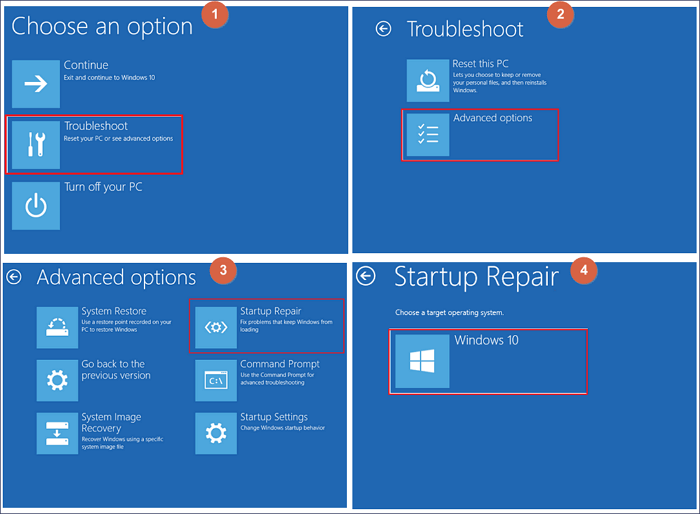
Step 4. Throughout the process, carefully follow any on-screen instructions provided by the tool.
Step 5. Restart the computer after the repair, and examine if the issue is resolved.
These steps might vary slightly based on your Windows version, but the overall process remains similar.
Startup Repair might be the magic spell your system needs, but if it doesn't do the trick, don't worry. We have more methods up our sleeve. Each method is a stepping stone toward bringing your Windows 10 system back to normal. So, let's move forward and explore the next method to fix this booting issue.
Method 2: Run Boot Repair in EaseUS Partition Master
When the ordinary fails, it's time to bring in the extraordinary. Meet EaseUS Partition Master Professional - your digital hero equipped with a powerful tool: Boot Repair. This feature is more than just a solution; it's a lifeline for your system, capable of resolving a myriad of startup issues. From missing or corrupted system files to disk write errors and BCD-related problems, EaseUS Partition Master's Boot Repair can tackle them all.
Now, follow the steps listed below to bring your system back to life.
Step 1. Start EaseUS Partition Master after connecting the external drive/USB to your computer, go to "Bootable Media," and click "Create bootable media."
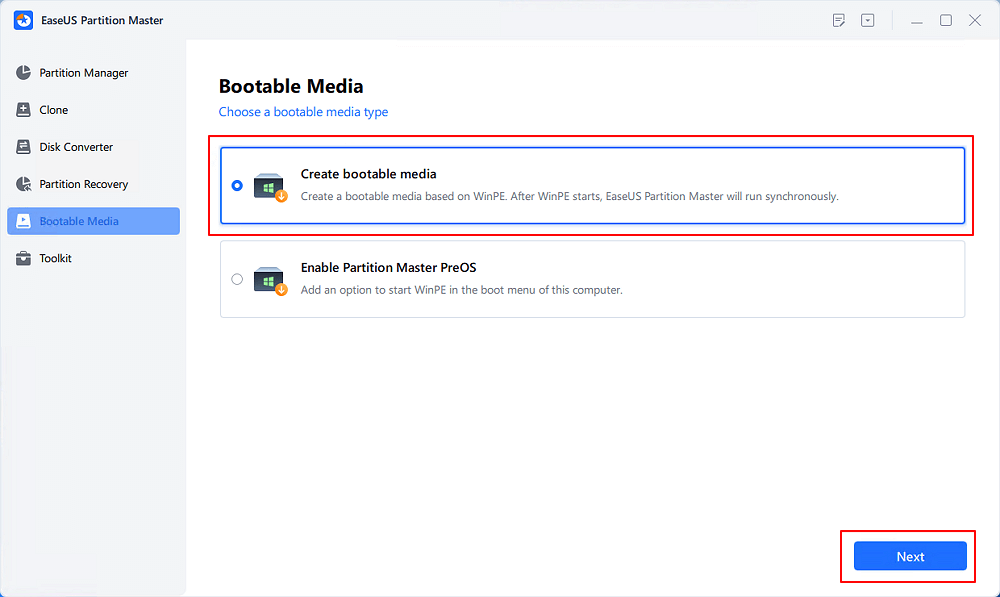
Step 2. Select an available USB Drive or CD/DVD and click "Create." You can also burn the Windows ISO file to the storage media.
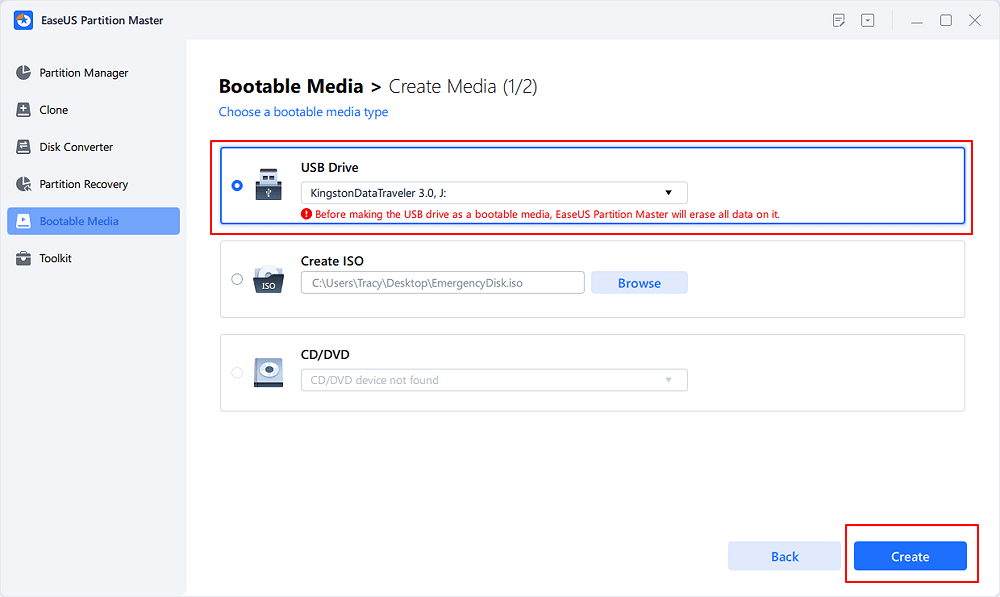
Step 3. Connect the created bootable drive to the new computer and reboot the computer by pressing and holding F2/Del to enter the BIOS. Then, set the WinPE bootable drive as the boot disk and press F10 to exit.
Step 4. Boot the computer again and enter the WinPE interface. Then, open EaseUS Partition Master and click "Boot Repair" under the "Toolkit" option.
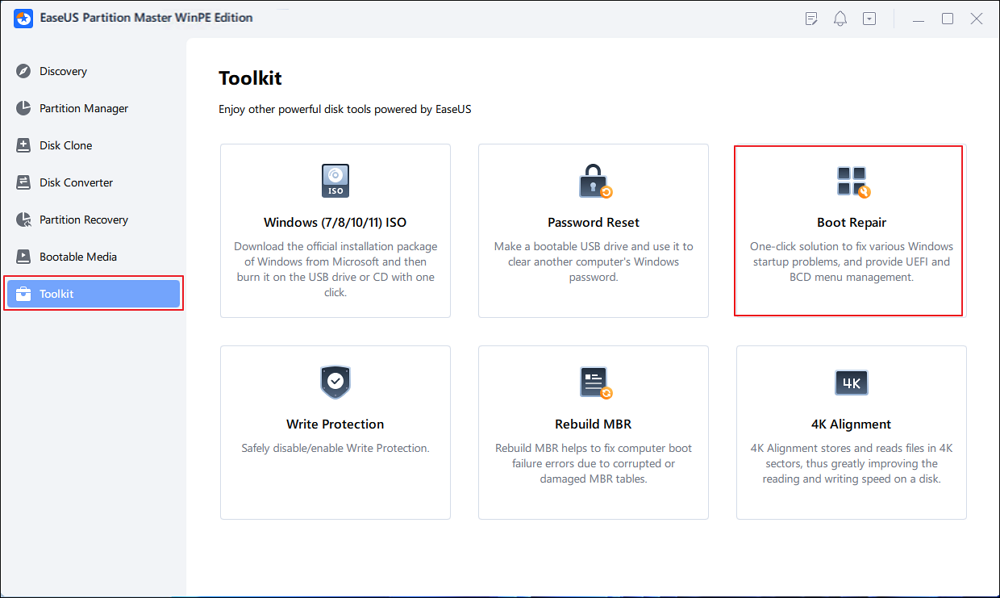
Step 5: Select the system you want to repair and click "Repair."
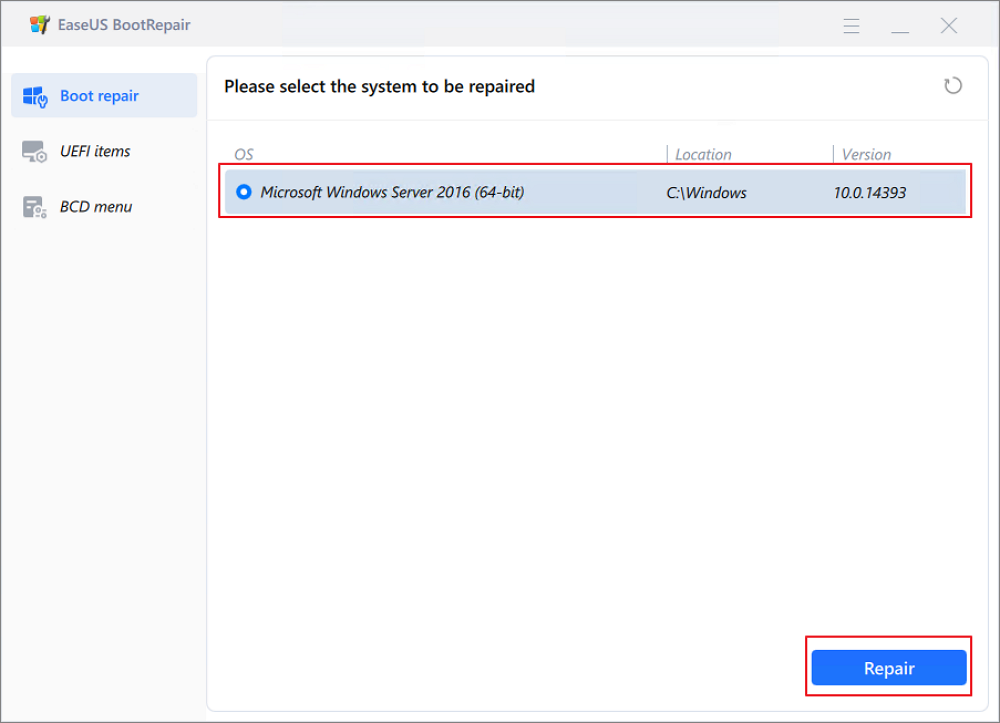
Step 6. Wait a moment, and you will receive an alert that the system has been successfully repaired. Click "OK" to complete the boot repair process.
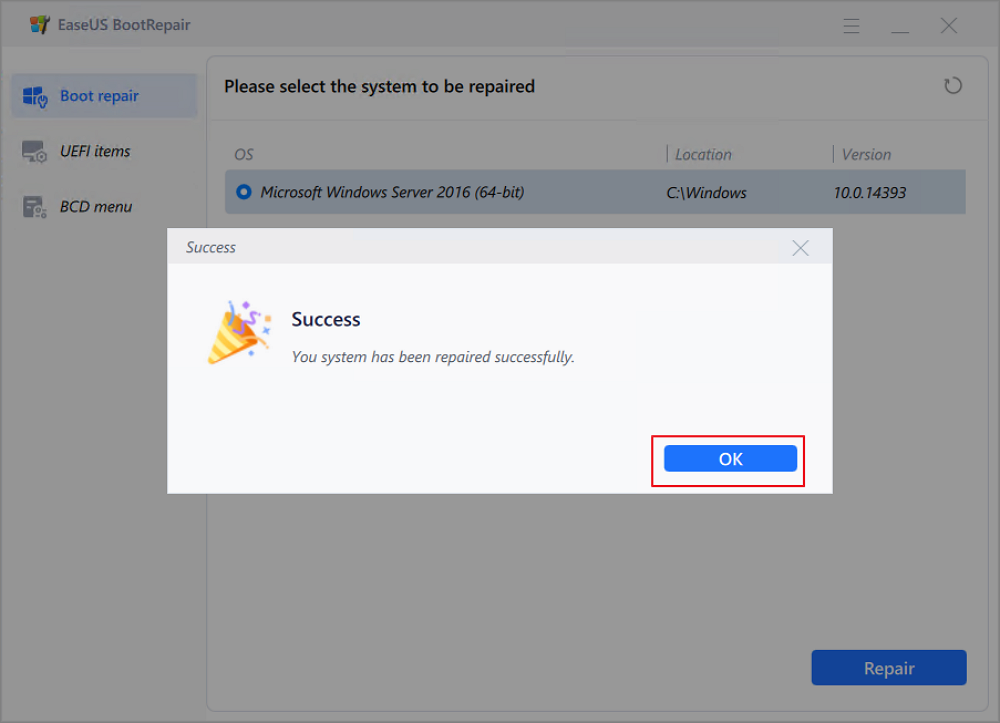
EaseUS Partition Master Professional is not just about rescuing your system; it's a treasure trove of features designed to empower you. With this software, you can resize, move, merge, split, and format partitions with utmost ease. Additionally, it offers advanced features like migrating OS to SSD/HDD, converting file systems, and even recovering deleted or lost partitions.
Download EaseUS Partition Master on your computer and stay ahead of the technical hurdles. Empower yourself with a tool that not only fixes problems but opens doors to a world of efficient, hassle-free computing.
If you find EaseUS Partition Master practical, share it with your friends to let them know.
Method 3: Rebuild MBR via Command Prompt
Your computer's ability to boot is compromised if MBR is corrupted. But fear not, for the Command Prompt is a powerful tool, often considered the backbone of Windows troubleshooting, that can rebuild the MBR and restore your system's boot functionality.
Step 1. Boot from your Windows installation media, select "Repair your computer," then go to "Troubleshoot" > "Advanced options" > "Command Prompt."
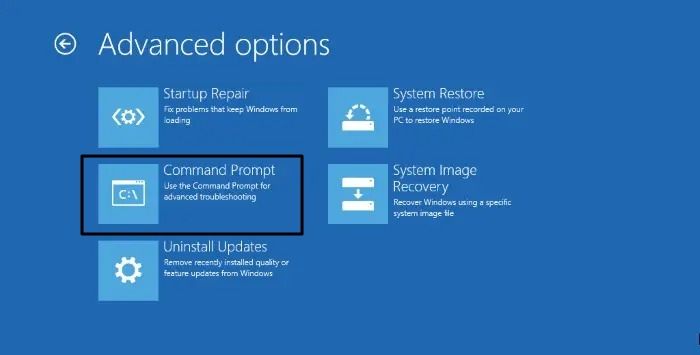
Step 2. Use diskpart to identify your system drive (usually "C:").
Step 3. Type bootrec /fixmbr to rebuild the MBR.
Step 4. Type bootrec /fixboot to recreate the boot sector.
Step 5. Type bootrec /scanos, and if installations are found, type bootrec /rebuildbcd to rebuild BCD.
Step 6. Type exit, press "Enter", then restart your computer to check if the issue is resolved.
While mastering the Command Prompt is empowering, we understand that some users might find it complex. If that's the case, remember your trusty companion, EaseUS Partition Master Professional. This remarkable software not only rescues you from boot issues but also offers an intuitive interface to fix damaged MBR effortlessly.
- Notice:
- Are you encountering issues with Windows 10 at startup? Note that Windows 10 officially ends support for Windows 10 on October 14, 2025. If you're adjusting system space or planning a reinstall, consider checking out this complete Windows 10 upgrade/backup guide to prepare in advance.
Why Your Windows 10 Won't Boot after Partition Resize
Here are some reasons behind this issue, helping you understand why your system has hit a roadblock:
Corrupted or Missing BOOTMGR Files
One of the primary reasons for boot failure post-partition resize lies in corrupted or missing BOOTMGR (Boot Manager) files. These essential files are responsible for initiating the Windows boot process. When they become corrupted, your system lacks the instructions it needs to start up correctly, leading to a halted booting process.
Damaged MBR
The MBR, a crucial sector at the beginning of your hard drive, contains information vital for booting your operating system. Damage to this record disrupts the boot sequence, leaving your system in a state of confusion. When the MBR is compromised, your computer loses its ability to locate and load the Windows operating system.
Missing Operating System Files
When essential operating system files go missing, your computer can't execute the necessary instructions to boot. This scenario often occurs after a partition resize when files crucial for the boot process accidentally get relocated, rendering your system incapable of finding the necessary data to start Windows.
Partition Table Errors
An invalid partition table error can occur during a resize operation, leading to misaligning partitions or erroneous partition information. Such errors confuse your system, making locating the correct boot partition challenging. As a result, your computer fails to boot, leaving you stranded.
File System Inconsistencies
Resizing partitions can sometimes lead to inconsistencies in the file system. These inconsistencies prevent your operating system from reading data correctly, hampering the boot process. When the file system is not in harmony with the changes made during the resize operation, boot failures become inevitable.
Understanding these key reasons is essential to resolve the issue. Armed with this knowledge, you're better equipped to fix the problem and prevent it in the future.
Have you resolved the problem? If so, share the post on your social media to help more users.
Conclusion
In this comprehensive guide, we've navigated the intricate maze of Windows 10 boot failures after partition resize, shedding light on the underlying causes and empowering you with effective solutions. Our goal was to demystify the complexities, providing clear steps and insights, ensuring that you understand the problem and how to fix it.
As you embark on restoring your system, we highly recommend utilizing EaseUS Partition Master. Its user-friendly interface and advanced features make the recovery process smooth and hassle-free, ensuring your Windows 10 system boots up and does so with renewed vitality. Don't just fix the issue; enhance your computing experience with EaseUS Partition Master today.
FAQs on Windows 10 Won't Boot after Partition Resize
Now, let's address some common queries surrounding Windows 10 boot problems after partition resize. Here are some answers crafted to simplify your understanding and guide you toward resolution.
1. Which partition should Windows 10 boot from?
Windows 10 should boot from the partition marked as Active. In most cases, this is the partition where your operating system is installed. Ensuring that this partition is correctly set as Active is crucial for a smooth boot process.
2. Is it safe to resize the OS partition?
Yes, it can be safe to resize the OS partition, but it requires caution. Always back up your data before attempting any partition resizing. Use reliable software like EaseUS Partition Master, which offers a user-friendly interface and minimizes the risks associated with resizing operations.
3. How do I fix the Bootrec /Fixboot Access is denied?
Here is how to Fix the "Bootrec /Fixboot Access is Denied" Error:
- Run Command Prompt as Administrator.
- Enter bootrec /fixboot and press "Enter".
- Verify administrative privileges. If needed, reopen Command Prompt as an administrator.
If the issue persists, consider using EaseUS Partition Master, a reliable third-party software. EaseUS Partition Master often resolves "Access is Denied" errors seamlessly and can help rebuild the Master Boot Record effectively.
Don't hesitate to explore further within this guide for more in-depth answers or additional questions.
How Can We Help You
About the Author
Updated by Joey Albert
Joey is an enthusiast of science and technology. With a passion for uncovering the latest tech innovations, she creates clear, engaging how-to guides that make technology accessible and enjoyable for all.
Oliver is an EaseUS professional writer who dares explore new areas. With a passion for solving tech issues with straightforward guides for common users, Oliver keeps honing his writing craft by developing in-depth solutions for disk and partition management, computer boot-up issues, file transfer, etc.
Product Reviews
-
I love that the changes you make with EaseUS Partition Master Free aren't immediately applied to the disks. It makes it way easier to play out what will happen after you've made all the changes. I also think the overall look and feel of EaseUS Partition Master Free makes whatever you're doing with your computer's partitions easy.
Read More -
Partition Master Free can Resize, Move, Merge, Migrate, and Copy disks or partitions; convert to local, change label, defragment, check and explore partition; and much more. A premium upgrade adds free tech support and the ability to resize dynamic volumes.
Read More -
It won't hot image your drives or align them, but since it's coupled with a partition manager, it allows you do perform many tasks at once, instead of just cloning drives. You can move partitions around, resize them, defragment, and more, along with the other tools you'd expect from a cloning tool.
Read More
Related Articles
-
NVMe Speed Test Tutorial on Windows [3 Efficient Ways]
![author icon]() Cici/2025/12/23
Cici/2025/12/23 -
Can I Run SSD Read/Write Speed Test Online? Sure, Your Guide Is Here
![author icon]() Tracy King/2025/12/23
Tracy King/2025/12/23 -
5 Methods to Fix Bootrec /Fixboot Access Is Denied Windows 11
![author icon]() Oliver/2025/12/23
Oliver/2025/12/23 -
How to Check Hard Drive Health on Windows 7 [Detailed Guide]
![author icon]() Sherly/2025/12/23
Sherly/2025/12/23
Hot Topics
EaseUS Partition Master

Version 20.0 is here - full exFAT support, easier disk partitioning, and PC performance optimization.








